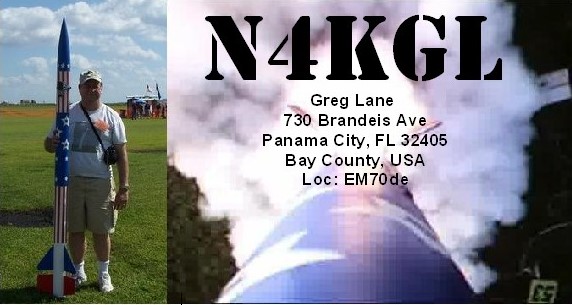UPDATE: A 4 hour operating period in the 24 hour window on July 16, 2016 UTC is suggested.
 |
| RaDAR Is Rapid Deployment Amateur Radio |
1. Aim
The RaDAR “Challenge” is a unique event aimed at promoting the use of Rapidly Deployable Amateur Radio stations. This challenge is for all licensed radio amateurs not limited to South Africa. A RaDAR operator can take part in any of the three defined categories (see point 7) which may be changed at any time during the challenge. The points system is so structured as to encourage portable RaDAR operations, especially moveable RaDAR stations. Moveable RaDAR stations rely on fixed and portable stations as a point of contact using channelised frequencies. “Search and pounce” techniques are also allowed.
2. Date and Time
From 00:00 UTC to 23:59 UTC on Saturday 16 July 2016. A 24 hour window will give equal opportunity to the international community of RaDAR operators. RaDAR operators are sugessted to chose a four hour operating period during the 24 hour window,.
3. Bands and Modes
All amateur bands are allowed including cross band contacts via amateur radio satellites.
Modes – CW, SSB, AM, FM or any legal digital mode. QSOs via terrestrial repeaters will NOT be allowed.
4. Suggested HF calling frequencies
See
http://zs6bne.wordpress.com/2013/03/06/radar-calling-frequencies/ for the latest international list of frequencies. The WARC bands can be used considering this is a RaDAR Challenge and not a contest as such. It provides better opportunities for RaDAR contacts during difficult propagation conditions. Recommended digital modes frequencies – Refer to the South African Radio League Contest Manual, General Rule 15.
5. Exchange
The RaDAR challenge requires more than a minimalistic information exchange. Accurate information exchange is considered more important than a large QSO count.
Call sign, name, RS(T) report, QTH and grid locator. Note the grid locator can change as RaDAR operators are allowed to move position at any time. The grid locator of six characters is acceptable but should preferably be accurate to 10 characters for higher
position accuracy. Smartphone applications are generally used to establish more than a 6-character grid locator. If working non-participating stations, call sign, name, RST and QTH is acceptable.
6. Scoring
1 point per QSO.
Individual QSOs – per mode, per band, per satellite, per call sign.
If the moving RaDAR station has moved the required distance (see point 7) contact can be made with a previously worked station, again.
7. Categories and multipliers
The following multipliers are applicable to determine the final score. If category/mode of transport changes were made during the challenge, than calculate accordingly.
X 1 – RaDAR Fixed station (At home or in another building)
X 2 – RaDAR Field station (Portable – away from home)
X 3 – Moving RaDAR station – See modes of transport below.
Modes of transport and required movement distances (moving RaDAR stations only)
Vehicles, motorcycles and motorboats etc. (Motorised transport) – 6 km
Bicycles – 2 km
On foot and paddle canoes – 1 km
Wheelchairs – 500 m
Aeronautical mobile stations are considered moving stations and can communicate at any convenient time.
Note: Moving RaDAR stations can move at any time but are required to move to the next destination after five contacts have been made from the present location. The move needs to cover the required distance before further contacts are allowed to be made. This requirement tests the ability to rapidly re-deploy your amateur radio field station.
9. Bonus points (All categories)
Five (5) points (The equivalent of five QSOs) for a minimum of one satellite or any digital modes QSO involving a computer, smartphone or digital modes device. (For clarity thereafter 1 point per Satellite / Digital modes QSO).
Five (5) points for the first successful same continent RaDAR to RaDAR QSO (As may be confirmed by the extensive information exchange.
Five (5) points for the first intercontinental (DX) QSO
Ten (10) points for the first successful inter continental (DX) RaDAR to RaDAR QSO (As may be confirmed by the extensive information exchange).
10. Log Sheets
Log sheets must be submitted by 26 April 2016 and sent by e-mail to edleighton@gmail.com.
See
https://zs6bne.files.wordpress.com/2015/03/11046905_10152762072212759_727315224761083499_n.jpg for a log sheet specifically designed for the 2016 RaDAR contest.
Note: A photo of the station (JPG format) MUST accompany every log entry. A photo is required for each new location that moveable stations visit. These photos are used to promote amateur radio and the RaDAR concept showing where amateur radio can be used to communicate from and in the many different ways.
The above is an excerpt from from
http://www.sarl.org.za/Web3/Members/DoDocDownload.aspx?X=20151130131559djqp8afPgb.PDF
Visit
zs6bne.wordpress.com and
https://plus.google.com/communities/109283065808971118728 for more info about RaDAR.
You are also encouraged to enter your RaDAR Op Plan at
http://radarops.co.za/index.php/planned-ops/
I encourage all hams to participate a. Let us know your plans and results. Good luck and be safe!
Greg N4KGL
www.N4KGL.info











.jpg)